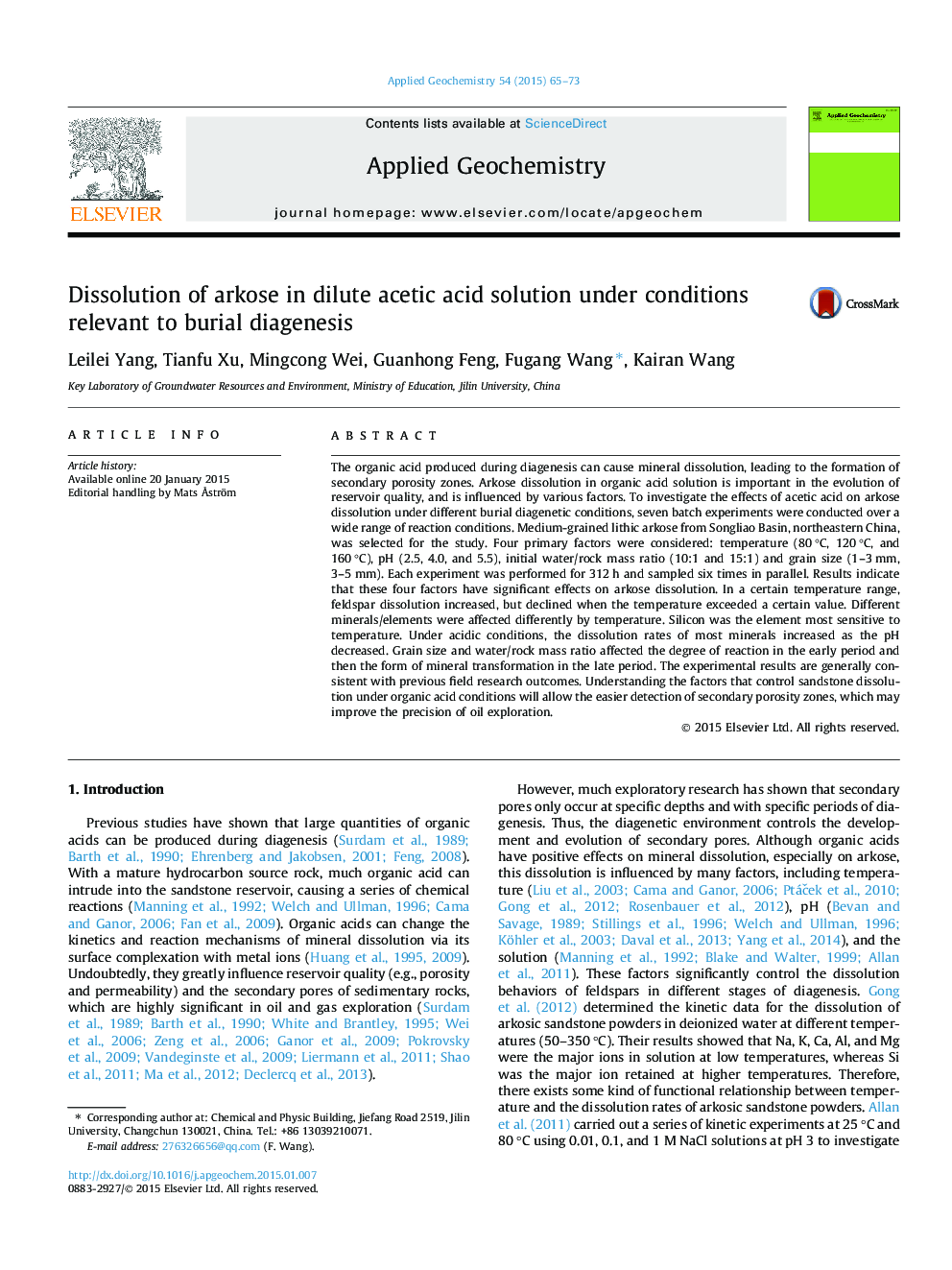| Article ID | Journal | Published Year | Pages | File Type |
|---|---|---|---|---|
| 6335230 | Applied Geochemistry | 2015 | 9 Pages |
Abstract
The organic acid produced during diagenesis can cause mineral dissolution, leading to the formation of secondary porosity zones. Arkose dissolution in organic acid solution is important in the evolution of reservoir quality, and is influenced by various factors. To investigate the effects of acetic acid on arkose dissolution under different burial diagenetic conditions, seven batch experiments were conducted over a wide range of reaction conditions. Medium-grained lithic arkose from Songliao Basin, northeastern China, was selected for the study. Four primary factors were considered: temperature (80 °C, 120 °C, and 160 °C), pH (2.5, 4.0, and 5.5), initial water/rock mass ratio (10:1 and 15:1) and grain size (1-3 mm, 3-5 mm). Each experiment was performed for 312 h and sampled six times in parallel. Results indicate that these four factors have significant effects on arkose dissolution. In a certain temperature range, feldspar dissolution increased, but declined when the temperature exceeded a certain value. Different minerals/elements were affected differently by temperature. Silicon was the element most sensitive to temperature. Under acidic conditions, the dissolution rates of most minerals increased as the pH decreased. Grain size and water/rock mass ratio affected the degree of reaction in the early period and then the form of mineral transformation in the late period. The experimental results are generally consistent with previous field research outcomes. Understanding the factors that control sandstone dissolution under organic acid conditions will allow the easier detection of secondary porosity zones, which may improve the precision of oil exploration.
Related Topics
Physical Sciences and Engineering
Earth and Planetary Sciences
Geochemistry and Petrology
Authors
Leilei Yang, Tianfu Xu, Mingcong Wei, Guanhong Feng, Fugang Wang, Kairan Wang,
